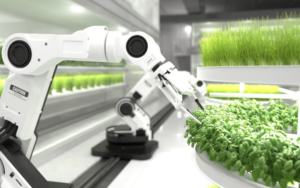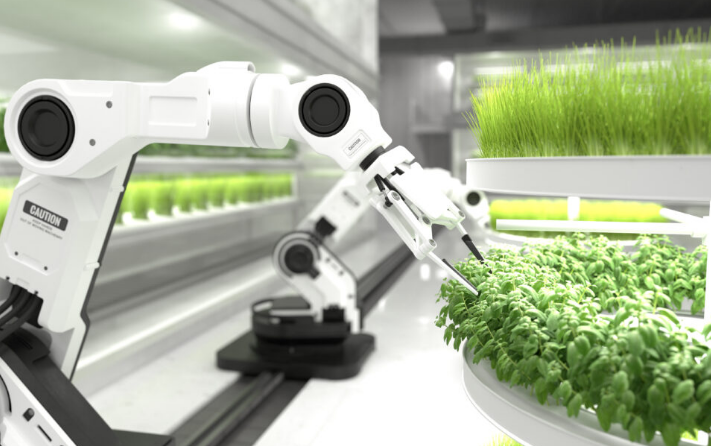Revolutionizing Agricultural Engineering with Robotics: Transforming Farming for a Sustainable Future
In recent years, the integration of robotics into agricultural engineering has sparked a revolution, transforming how food is produced, harvested, and managed. With the global demand for food increasing and challenges such as labor shortages, climate change, and resource constraints intensifying, robotics has emerged as a critical solution to enhance efficiency, sustainability, and productivity in agriculture.
This article delves into the transformative role of robotics in agriculture, exploring its benefits, innovative applications, and future potential.
The Role of Robotics in Modern Agriculture
Agricultural robotics involves the use of advanced technologies such as artificial intelligence (AI), sensors, and automation to perform farming tasks with precision and efficiency. These technologies are designed to tackle some of the industry’s most pressing challenges while minimizing the environmental impact.
- Addressing Labor Shortages
The agricultural sector has been grappling with a persistent labor shortage, particularly in labor-intensive tasks like harvesting and planting. Robotic systems can perform these tasks faster and with greater precision, reducing dependency on human labor and ensuring timely operations. - Enhancing Precision Farming
Precision agriculture focuses on optimizing the use of resources such as water, fertilizers, and pesticides. Robotics plays a vital role in achieving this by employing technologies like drones, automated tractors, and robotic sprayers. These tools allow farmers to monitor crops closely and apply inputs only where needed, minimizing waste and environmental damage. - Improving Crop Yields
Robotic systems equipped with AI and machine learning analyze vast amounts of data, providing farmers with actionable insights to improve crop health and productivity. By identifying patterns and predicting issues such as pest infestations or nutrient deficiencies, robots help maximize yields while reducing costs.
Key Applications of Robotics in Agriculture
Robotics has brought significant advancements to various areas of agriculture. Here are some of the most impactful applications:
- Autonomous Tractors and Machinery
Autonomous tractors are designed to operate without human intervention, performing tasks like plowing, seeding, and spraying with unmatched accuracy. These machines are equipped with GPS and AI-driven systems, enabling them to navigate fields independently and optimize operations. - Robotic Harvesters
Harvesting crops is one of the most labor-intensive tasks in agriculture. Robotic harvesters use advanced sensors and cameras to identify ripe produce and pick it with precision, minimizing waste and damage. These systems are especially beneficial for delicate crops like fruits and vegetables. - Drones for Monitoring and Spraying
Drones have become indispensable in modern farming. They provide real-time aerial views of fields, helping farmers monitor crop health, identify pest infestations, and assess soil conditions. Additionally, drones equipped with spraying systems can apply fertilizers and pesticides more efficiently than traditional methods. - Weeding Robots
Robotic weeders use machine vision and AI to detect and remove weeds without harming crops. These robots reduce the need for chemical herbicides, promoting eco-friendly farming practices and improving soil health. - Livestock Management Robots
Robotics is also transforming livestock farming. Automated systems handle tasks such as feeding, milking, and health monitoring, ensuring animal welfare and reducing labor requirements. Smart sensors track vital signs and behavior, allowing farmers to address health issues promptly.
Benefits of Agricultural Robotics
The adoption of robotics in agriculture offers a multitude of benefits that extend beyond productivity and cost savings.
- Increased Efficiency
Robots work around the clock without fatigue, completing tasks faster and more accurately than human labor. This ensures that farming operations remain uninterrupted, even during peak seasons. - Sustainability
By optimizing resource usage and reducing reliance on chemicals, agricultural robotics promotes environmentally friendly practices. Precision application of water and fertilizers conserves resources while minimizing pollution. - Cost Reduction
Although the initial investment in robotic systems can be high, the long-term savings in labor costs and improved productivity offset the expense. Moreover, reduced waste and higher yields contribute to better profitability. - Enhanced Food Security
With the global population projected to reach 10 billion by 2050, ensuring food security is a critical challenge. Robotics helps meet this demand by increasing agricultural output and minimizing post-harvest losses.
Challenges and Future Prospects
While the potential of robotics in agriculture is immense, there are challenges to address. High costs of implementation, the need for technical expertise, and concerns about data privacy are among the primary barriers. Additionally, small-scale farmers may struggle to access these advanced technologies due to financial constraints.
However, ongoing innovations and collaborative efforts between technology providers, governments, and agricultural stakeholders are driving progress. Affordable and scalable robotic solutions are being developed to ensure that farms of all sizes can benefit from these advancements.
Conclusion: A New Era of Farming
Robotics is revolutionizing agricultural engineering, paving the way for a more sustainable, efficient, and productive farming industry. By addressing labor shortages, enhancing precision, and promoting eco-friendly practices, robotics offers a transformative solution to some of agriculture’s most pressing challenges.
As technology continues to evolve, the integration of robotics into agriculture will only deepen, ensuring that the industry can meet the demands of a growing global population while safeguarding the planet’s resources. Farmers, policymakers, and innovators must work together to harness the full potential of robotics and usher in a new era of farming excellence.

Also Read :
- Exploring New Materials for Space Exploration: An Engineering Perspective
- Hydrogen Fuel Cells: Engineering Cleaner Energy Systems
- The Impact of 3D Printing on Biomedical Engineering
- Autonomous Vehicles: The Engineering Challenges and Innovations
- Sustainable Urban Planning: Engineering for Smart Cities
